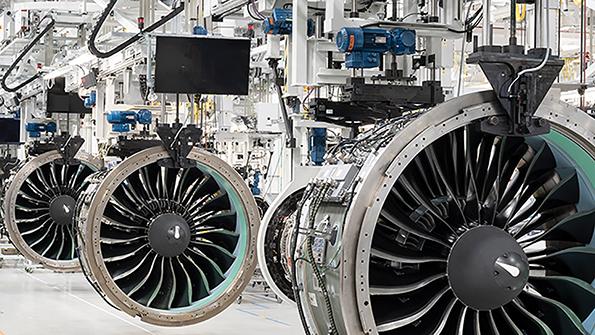
As Boeing is quietly beginning work on what is called the -5X project—a small widebody aircraft derived from its new midmarket airplane studies—the situation is getting serious for the three engine OEMs. The aircraft, if launched, would be the only new application for an engine-development program in the foreseeable future. It may also be the last conventional turbofan.
Although General Electric, Pratt & Whitney and Rolls-Royce enter the competition from different positions, the stakes are very high for all of them. Many variables make the choice a tricky decision for Boeing.
Because GE has a strong legacy with Boeing and because GE’s CFM International joint venture with Safran enjoys exclusivity on the 737 MAX, the -5X is GE’s competition to lose. Also, new GE Aviation CEO John Slattery will not want to lose his first major competition at Boeing, even though one of his likely goals is a stronger presence at Airbus. Since GE decided to stick with its earlier commitment to pursue the new midmarket airplane through its CFM partnership, it seems likely GE would offer another version of the Leap engine.
GE partner Safran has been studying open-rotor concepts for years, and the potential fuel-burn advantages are well known. But even if an open rotor design could be matured in time, it seems highly unlikely that Boeing would opt for the fundamental configuration changes required for this propulsion system—namely rear-mounted engines.
Airbus, on the other hand, may be in a better position to consider open rotors in any potential clean-sheet follow-on applications, particularly since the concept may dovetail with elements of its longer-term alternative-fuel strategy.
For Pratt & Whitney, the outlook is quite different. The engine-maker has achieved a comeback in the narrowbody arena with its PW1000G geared turbofan (GTF), which has a decent share of the A320neo family market. The GTF is not on the 737 MAX program, however, and Pratt needs another project to grow the GTF and ultimately reach its target to both regain a foothold at Boeing and reenter the widebody market. The -5X could not only be that project but also give it much-needed entry to a new sector of the widebody market.
Although Boeing’s relationship with GE is close, one could make the argument that choosing Pratt would have strategic advantages. Pratt has a head start on the geared architecture that many analysts believe will become standard for new conventional engines. A Pratt-powered -5X likely would not dilute 737 and 787 backlogs as much as a GE/CFM-equipped aircraft simply because it would require airlines to move from one manufacturer to another. The hurdle would be much lower for airlines with 737-9s or -10s on order that would like to trade up to the more capable model and for 787 operators that find the aircraft is more than they need.
Boeing also needs to decide whether there will be exclusivity for one engine OEM on the program. For the engine manufacturers, the business case will depend not only on the aircraft’s sales success and the number of competing engines on the program but also on whether an Airbus application will follow at some point. The most likely scenario would be another upgrade of the A321neo, which is currently offered with two engine options.
The -5X is also the only conceivable all-new platform on the horizon for the Rolls UltraFan. Technically, the concept looks attractive, and commercially it would expand the company’s exposure to Boeing beyond the 787 program. Rolls also sees the UltraFan as a next-generation reengining candidate for the 787 and A350 as well as a platform from which to build a family of new-technology engine offerings with a thrust ranging from 25,000 lb. to more than 100,000 lb.
Might the -5X, therefore, be the trigger for a merger of Rolls-Royce and Pratt & Whitney that some in the industry have been expecting for a while? Such a deal would give the combined company access to both the narrowbody and widebody segments, making it a more powerful competitor against GE and Safran.
Many uncertainties remain, however, and despite years of speculation about such a merger, it has not yet happened. To what extent would Pratt-Raytheon Technologies be prepared to fund a transaction and an expensive development program? Could the two engine-makers create a 21st-century joint-venture version of International Aero Engines—a once successful partnership that effectively dissolved after the development of the GTF? Plus, of course, a lot of politics would be involved, not only with regard to Rolls’ role now that the UK is no longer part of the EU. France, in particular, might want to push for a European solution involving Rolls and Safran that would disrupt the current industry setup and any product plans along with it.



